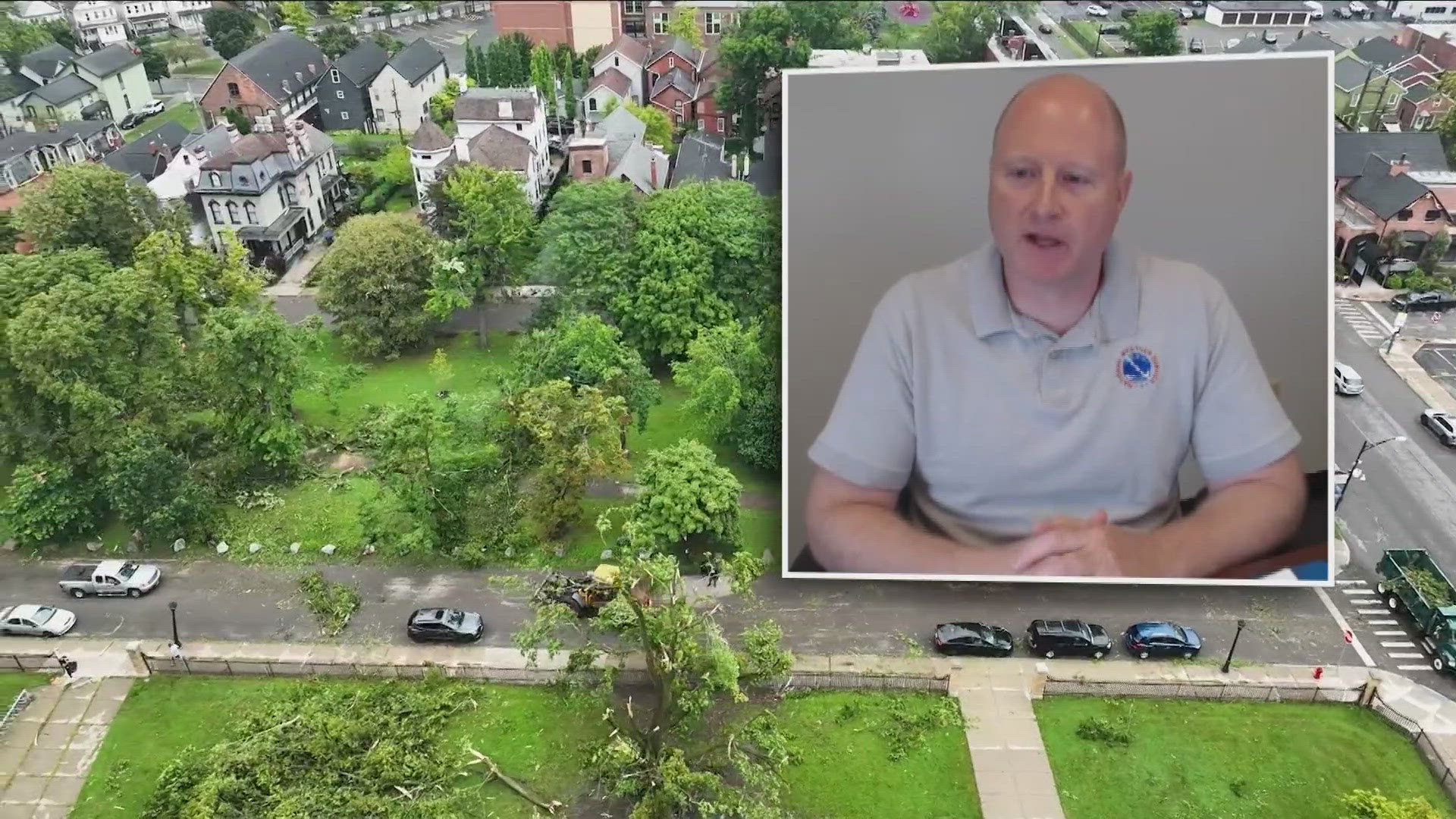BUFFALO, N.Y. — One of the questions viewers have had since Monday's tornado in downtown Buffalo is "why wasn't there a tornado warning issued?"
"This was really quick," said NWS Meteorologist Aaron Reynolds. "In fact, it was within about five minutes."
Reynolds says a combination of factors are the reason why no tornado warning was issued.
The tornado formed and lifted in the time it took for the NWS radar to refresh.
"It occurred really quickly within five minutes, and sometimes that can fall within each volume scan within our radar," Reynolds said.
Mother nature, it seems, was simply too quick for modern technology.
"We had some issues with the radar, it was hard to see as it came in and stuff, " Reynolds siad. "So a lot of times we rely on reports and spotter reports, and the meteorological community as a whole to help us out."
In many ways, the conditions were perfect for a downtown tornado, according to Reynolds. The microclimates of Lakes Erie and Ontario quickly converged to form the EF-1 tornado.
"We have what's called Lake breeze boundaries that form," Reynolds said. "Basically the circulation between the land and the water, and that's what caused this for storm to form and followed right along to converging Lake breeze boundaries.
The tornado crossed the Niagara River from Fort Erie, touching down on Niagara St. and proceeded through the lower west side and downtown just after 12:45 P.M. on Monday.
"This is very unique," Reynolds said. "According to our records, this is the first time that we've ever had something downtown."
According to the city of Buffalo, the tornado caused about $2.5M worth of damage.
The National Weather Service plans to study the data collected from trained spotters and the various meteorological instruments the agency uses.
"It will be studied, looking at it here locally, and our NOAA research scientists will take a look at this storm," Reynolds said.
While lake temperatures have been trending warmer than usual in 2024, Reynolds says the lake temperature had no significant impact in terms of causing the storm.
"Early in the spring, the lake can have a lot of impacts," Reynolds said. "But as the warm as the lake warms up, it has less and less impact."
The primary cause, as Reynolds mentioned was the differences between the two lakes.
"We still get these lake breeze boundaries, because you're still going to have inland, heating that warm up warmer than the water," Reynolds said.
Related Video:

